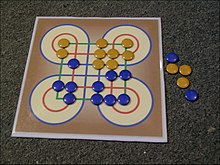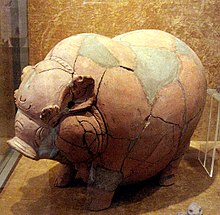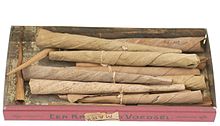25 Great Indonesian Inventions that Shook the World
Indonesian inventions are awesome. Indonesia will not be globally acclaimed as a nation of brilliant minds and inventors, however, each nation’s ancient and modern improvements have contributed enormously to the life of many.
Indonesian inventions
Discover great innovations we are able to thank Indonesia for. Lets find below a list of 25 great Indonesian inventions!
1. Kretek
Kretek, is a fragrant cigarette made with a mix of tobacco, cloves, and different flavors. This Indonesian cigarette was developed in 19th century Central Java. The phrase “kretek” itself is an onomatopoetic time period for the crackling sound of burning cloves.
2. Her Pads
Her Pads, early detection of cervical most cancers created by Hibar Syahrul Gafur and impressed by the battle of his mom as a survivor for one of the Indonesian inventions.
3. Polygon bike
This heavy-duty bicycle has been produced without branding in Indonesia since 1989. The merchandise has been imported to and bought as completely different manufacturers in several nations.
Now, the producer has chosen Polygon to be its personal brand and to maintain serving clients from across the globe underneath its personal name. Polygon has additionally been trusted by world-class groups and athletes as a result of its high quality and design.
4. Kite
Kite, the oldest kite on the planet was invented by Muna people in southeast Sulawesi. Dubbed as kaghati, oldest depiction of this kite is from 9,000 B.C., predating the Chinese kite by 9,500 years.
5. Beef Rendang
Originally a conventional recipe from the Minangkabau people in Indonesia, the recognition of this dish has prolonged to the entire nation, and even to many different nations. The tender meat and thick, savory paste shortly stole the hearts of many. The dish even gained CNN’s ballot of “World’s 50 Most Delicious Foods” in 2011. Originally served throughout ceremonies and particular events, the recipe takes hours to arrange and makes use of many alternative spices.
6. Nagapasa-class submarine
Nagapasa-class submarine, an upgraded variant of the Chang Bogo class, constructed by Indonesian PT PAL in collaboration with the South Korean DSME. Alugoro particularly is the first submarine assembled in Indonesia, making Indonesia the first nation in Southeast Asia which have the potential to construct a submarine.
7. Indomie
Indonesia’s most popular on-the-spot noodle brand has additionally gained admiration from people across the globe.
The comparatively low cost worth and powerful taste have made this product extensively consumed in Indonesia, and in lots of different nations too. Indomie has quite a few taste selections, from rooster curry to soto (Indonesian broth), beef rendang to the grilled rooster.
8. Oncom
Oncom, fermented by-product of soybean or peanuts tailings (tofu dregs), which rising mildew of Rhizopus oligosporus or Neurospora intermedia var. oncomensis. The fermentation method is native to West Java.
9. Piggy Bank
Piggy bank, often called celengan in Indonesian, it’s a boar-shaped terracotta figurine with a slit gap used to insert, acquire and store cash. Despite piggy bank was most likely a result of parallel growth in a number of locations around the globe, one of many oldest manifestation of pig-shaped cash field is dated from Majapahit interval, in Java circa the 14th century.
10. Cakar ayam development
Cakar ayam development, or actually means “chicken claw construction” is technical engineering to create a more stable basis by using concrete plate supported by pipes planted deep into the ground acted as “claws”, invented by Prof. Dr. Ir. Sedijatmo in 1961.
The method is utilized on constructions, roads, and runways. The technical principle includes a concrete plate basis that is supported and secured to the ground by pipes as “claws”, which allowed a more stable development, allow to construct construction on smooth moist ground corresponding to swamps.
The method allowed the construction to be more inflexible, stable, and more sturdy in opposition to uneven weight distribution or uneven land declining with the Indonesian inventions.
11. Lantaka
Lantaka, a kind of bronze swivel gun mounted on service provider vessels traveling the waterways of Malay Archipelago. Its use was best in pre-colonial Southeast Asia particularly in Indonesia, Malaysia, Brunei, and the Philippines.
12. Magno radio
This picket radio is beloved for its classic qualities and personalized design. Many clients even consider that the waxed picket materials, with none further coating, make the sound higher and clearer.
Nowadays, many Magno radios have been geared up with a dock to hook up with mp3 player, SD card slots, and more Indonesian inventions.
The product that first originated in Temanggung, Central Java, already has three major international distributors in Asia, Europe, and the United States.
13. Rendang
Rendang, gradually cooked spicy meat dish, often beef cooked with a complicated combination of spices and coconut milk. A specialty of Minangkabau ethnic group of West Sumatra. The spices, garlic, shallot, ginger, and galangal utilized in rendang have antimicrobial properties and function natural preservatives.
14. 4D scanner
A technology known as Electrical Capacitance Volume Tomography (ECTV) makes it possible to do imaging of particles in Four dimensions inside chemistry reactors.
This invention was first developed as a part of the try to search out new energy sources and has helped the initiative in some ways. The technology found by Dr. Warsito Purwo Taruno can even assist enhance different sectors from medical to nano-technology.
15. Brem
Brem, conventional Indonesian fermented meals or fermented beverages, one of the Indonesian inventions.
There are two varieties of brem, brem cake (strong) that’s often eaten as snacks from Madiun and Wonogiri, and brem beverage (liquid) fabricated from rice wine from Bali. Brem appeared in Java circa 1000 CE.
16. Jamu
Jamu is Indonesia’s conventional natural drink which efficacy in assuaging varied diseases has stood the check of time.
Many modern medicines use jamu formulation to develop their merchandise, together with the popular Tolak Angin, a natural drug to deal with frequent colds. Product high quality has made this jamu-based medicine popular in lots of Asian nations, Australia, and the Netherlands.
17. Batik
Batik is a centuries-old craft practiced in lots of components of Indonesia. Different localities have their very own philosophy, design, and strategies, all contributing to the richness of this custom.
Its beautiful motif and cultural significance have made batik a popular memento to convey a house from Indonesia. Depending on the world, vacationers can discover batik patterns with native, Chinese, Indian, even European, or religious effects.
18. Kopiko coffee sweet
Long before there was a Starbucks in each nook, Indonesian had created their very own handy caffeine repair.
This coffee sweet is taken into account innovative and has been exported to no less than 90 nations. Just like a cup of coffee, a bar of this sweet has an energizing impact with a robust coffee taste.
19. Subak
Subak, the paddy fields irrigation system of Bali, incorporates water temples, rice terraces, and completely ecological and socio-cultural elements of the conventional Balinese agricultural community.
20. Borobudur ship
The Eighth-century picket double outrigger, sailed vessel of Maritime Southeast Asia depicted in some bas reliefs of the Borobudur Buddhist monument in Central Java, Indonesia, one of the Indonesian inventions.
21. Sandiwara
Sandiwara, a style of the conventional theatrical drama of Indonesia. In common, it confers with any sorts of drama or theatrical performances, and actually, sandiwara means “to pretend” or “to act”. However, the time period is usually used to explain a style of the conventional drama of West Java, with notable instance embrace the as soon as well-known Sandiwara Miss Tjitjih.
22. Tempeh
Tempeh (or tempe in Indonesian) has been more and more popular as a wholesome protein different in vegetarian or vegan diets. But long before the soy-based product started displaying up in way of life bloggers’ feeds and hit the worldwide market, ancient communities in Java, Indonesia, have been consuming tempeh of their on a regular basis diet.
This cake-like protein source can be wealthy in dietary fiber and nutritional vitamins because of the fermentation process used to make it, like one of the Indonesian inventions.
23. Kris
Kris, asymmetrical wavy blade indigenous to Indonesia, particularly Java island. It has distinctive blade-patterning achieved by alternating laminations of iron and nickelous iron (pamor).
24. Luwak coffee
Luwak coffee is the most costly coffee on the planet, by accident found by a regular coffee farmer in Indonesia through the Dutch colonial period. One day, the coffee farmer, who was not allowed to style the worldwide commodity, observed that the droppings from a sure sort of civet known as luwak comprise intact coffee beans.
Curious, the farmer washed and brewed the coffee cherries, leading to a singular, light-weight coffee style because of the fermentation process within the civet’s digestive system.
25. Warung
Warung, a kind of small Indonesian family-owned business — usually an off-the-cuff store, a modest small restaurant, or café, one of the Indonesian inventions.
There are many sorts of warung, some take the type of a small store that sells chilly bottled drinks, sweet, cigarettes, snacks, kue, krupuk, and different everyday requirements, whereas the bigger ones are small restaurant institutions.
























